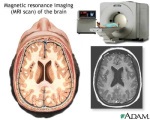Welcome to The Biomedical Engineering Institute

Biomedical Engineers produces the tools of modern Medicine. From Genetics Engineering in the manufacture of pharmaceuticals to Nanomaterials used in drug delivery and contrast agents for medical imaging, Biomedical Engineers are transforming modern medicine.
Biomedical Engineering is integrating the interface between man and machines with microchips and transmitters that are implanted in that brain which can read brain activity from neuronal signals, bypassing the need for language, and executing direct control of computers and machines.
In fact both Tissue Engineering and Genetics Engineering can now be considered the domain of Biomedical Engineering as engineers use the techineques form cell biology to create new organs or apply these combined skills to design new drugs in the pharmaceutical industry.
-
Medical Devices
From pacemakers to cocclear implants to the artificial joints used in joint replacement surgery as well as the surgical instruments and imaging devices, Biomedical Engineering applications in medicine are indispensable. At the heart of the challenge of Biomedical Engineering is the design of medical devices and implants. The selection of the right materials that are compatible with biological tissue and with the correct strength and electrical properties; the design of electronics and electrical circuits that are compatible with the body's intricate bioelectric system, while ensuring these devices are reliabile, accessible and servicable are all decisions that the biomedical engineer must ponder carefully when taking on the challenge of medical device design. Because the pacemaker not only keeps the patient alive, but also allows the patient to remain productive at work and present in the lives of his family members and community, the Biomedical Engineer not only saves patient's lives but also saves companies, families and communities.
The new frontier of Biomedical Enginnering is the use of nanomaterials and nanodevices for pharmaceutical applications such as drug delivery. Biomedical Engineers are now involved in rational drug design and
drug discovery . The use of nanomaterials to design delivery systems for pharmaceuticals that can release a measured quantity of drug over time to keep its concentration above the IC50 will transforn the way patients take medications. And the design of nanodevices that can take realtime images from inside a blood vessle or inside cells will transform our understanding of pathophysiology of heart disease and cancer. A career in Biomedical Engineering that starts with a degree from the Biomedical Engineering Institute can be a very challenging and rewarding life long endeavour. Are you ready for the challenge? -
Robotics in Medicine
Human Computer Interface is the last frontaire of Medicine which will be pioneered by Biomedical Engineers. One example of this is spinal cord injury. If the spinal cord is severed in an accident, paralysis usually occurs below the level of that injury. Restoring functional movement to paralyzed limbs has remainded one of the most challenging problem in medicine. A Biomedical Engineering solution which shows promise is to insert a computer microchip in the spinal cord below the site of the injury and another microchip in the sensory motor cortex of the brain, with a wireless transmitter-receiver link between the two microchips. Restoring the neuronal communication between the brain and the paralyzed muscles, restores movement below the level of spinal cord injury. This Biomedical Engineering solution to paralysis provides hope to patients when no other branch of medicine has yet provided a cure.
Exoskeletons are the next best solution to paralisis or to augmenting human performance and strength. This is also the domain to the Biomedical Engineer.
Robotics applications in the Pharmacetiacal industry bring accuracy, precisson and high through put to the work flow in the manufacture of pharmaceuticals. The demand for consistency and repeatability of measurements in the formulation of drugs can only be met with mechanical robots that do not get tired or lose concentration. And because they can produce a large volume product over a non-stop 24-hour work cycle, robots and robotics engineers have become indispensable to the pharmaceutical industry. In this environment the Biomedical Engineer combines knowledge of engineering, pharmacology and medicine and brings it bear on problem solving in the pharmaceutical industry. With a degree from the Biomedical Engineering Institute you will be well positioned to advance the frontaires of modern medicine.
University Calendar
-
This course will define the role and position of medical imaging in the modern healthcare delivery systems. The structures of the healthcare system, hospital administration and medical departments are outlined. You will learn how to navigate the healthcare system.
-
This course will outline the precautions to be taken by healthcare professionals during the delivery of patient care. We will learn how to remain safe and healthy in dangerous environments such as a pandemic while delivering expert care as a medical imaging professional.
-
This is an introduction to the Physics that underlies Medical Imaging with X-Rays.
-
This is computer programing course introduces the concepts of image processing and image analysis applied to diagnostic medical images. Artificial Intellegence is introduced for problem solving in diagnostic imaging.
-
This is an introduction to the instrumentation and patient manipulation procedures for obtaining various image views with X-Rays.
-
This is an introduction to Physiology for Medical Imaging Professionals.
-
This is an introduction to Cell Physiology for Medical Imaging Professionals.
-
This is an introduction to Pharmacology for Medical Imaging Professionals.
-
This is an introduction to the Pharmacology of Drug Design for Medical Imaging Professionals.
-
This is an introduction to the Anatomy of the human body for Medical Imaging Professionals.
